
Community Shares Spilt Reaction to Gov. Hochul's Pause on MTA's Congestion Pricing Plan
Dyson Professor Ric Kolenda speaks with New12 about Gov. Kathy Hochul’s recent announcement on indefinitely delaying the implementation of congestion pricing in New York City’s borough of Manhattan just weeks before the plan was set to take effect.
Could Laws Help Curb Kids' Social Media Use?
Elisabeth Haub School of Law Professor Leslie Garfield Tenzer provides expert insight to CBS News on the recent efforts by New York state legislators finalizing legislation that would enact certain limitations for kids using social media.
Seidenberg Launches the 2024 AI Internship Experience Program
The 2024 AI Internship Experience Program at the Seidenberg School started this week! This intensive, two-week paid program for undergraduate and graduate students of Seidenberg will include a multitude of hot topics and tools in technology, a crash course in Python, GitHub workshops, networking, career development, and more.
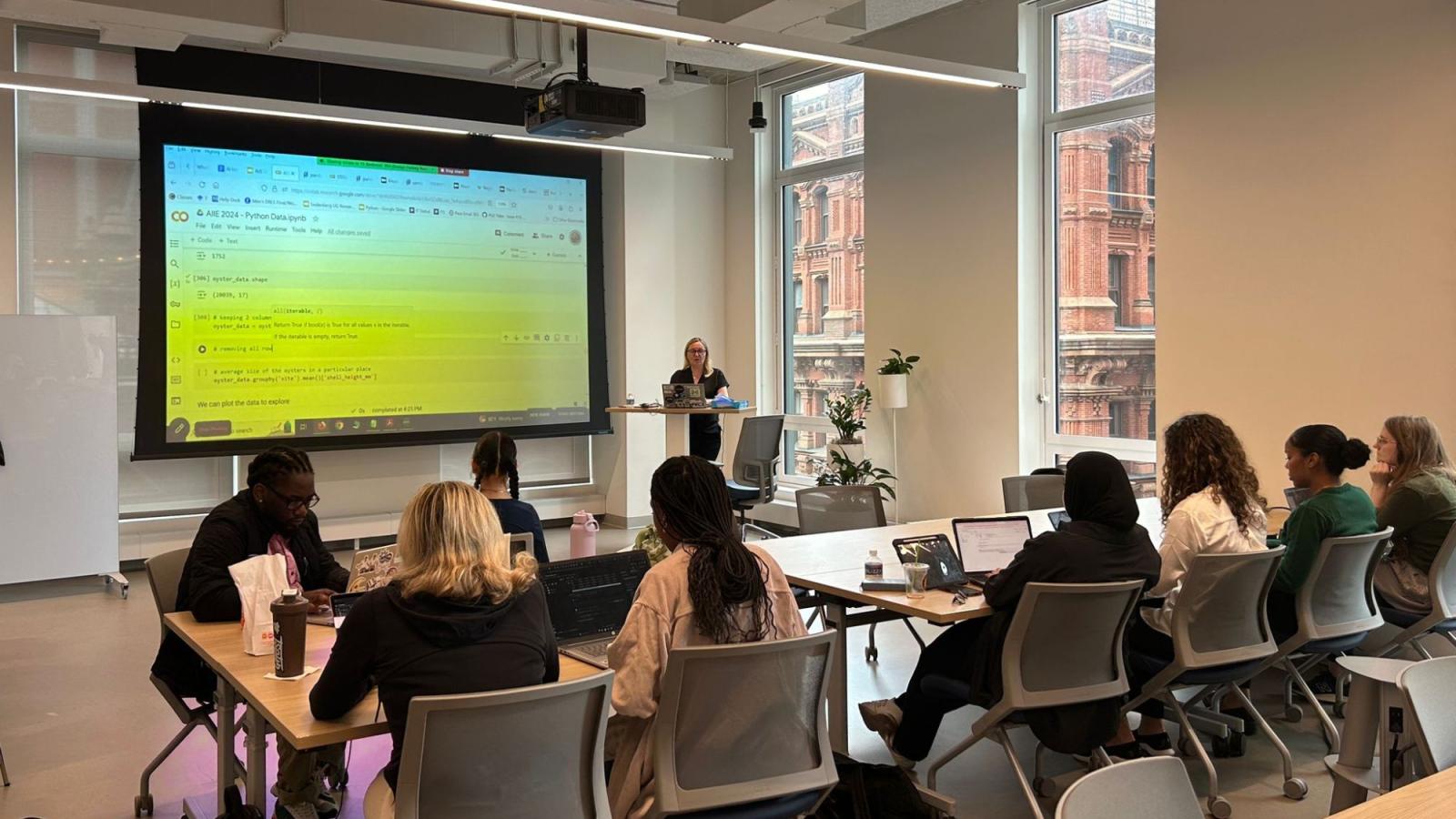
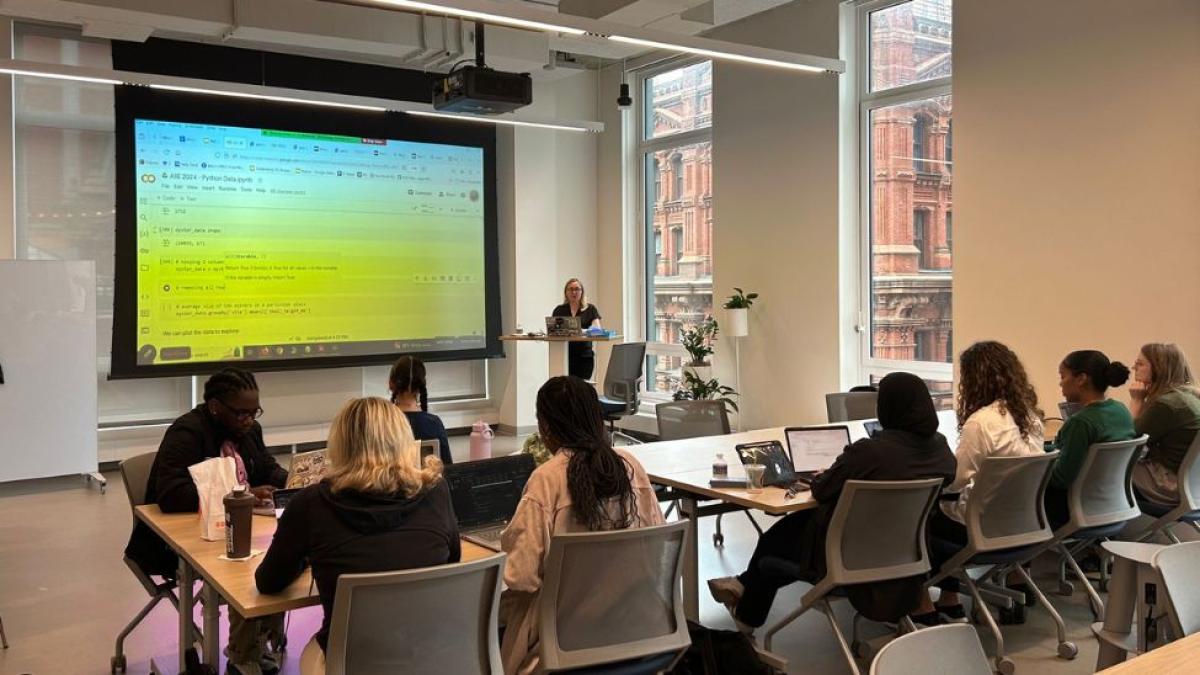
The 2024 AI Internship Experience Program at the Seidenberg School started this week! This intensive, two-week paid program for undergraduate and graduate students of Seidenberg will include a multitude of hot topics and tools in technology (such as Introduction to Machine Learning and CNN, Generative AI, Agile Methodologies, and Scrum), a crash course in Python, GitHub workshops, networking, career development, and more. All interns will leave the program with resume worthy projects. The program will culminate in a presentation on Friday, June 14, from 1:00 p.m.–4:45 p.m. in the NYC Design Factory on the 9th floor of 15 Beekman.
Seidenberg Professor, Associate Dean, and Co-Director of the Seidenberg AI Lab, Dr. Christelle Scharff, is leading the program with Dr. Carmine Guida, Assistant Professor and head of Seidenberg’s new BS in Game Development.

When describing the program, Dr. Guida said that “the AI Internship Experience gives our students the opportunity to gain hands-on experience with artificial intelligence, machine learning, project management, pre-professional advancement, and design thinking.” Elaborating on how comprehensive this experience will be for the interns, he said that the “students will develop and deploy two AI-related projects, including an image classifier and generative adversarial network (image generator). Additionally, students will develop their GitHub repositories and enhance their resumes and LinkedIn profiles. They will also be mentored by Career Services, as well as Pace alumni.”
Dr. Scharff added that she and Dr. Guida decided to put the program together because they wanted to “have a program that is very innovative, that is for the next generation. This experience is inspired by internship programs of leading tech companies, such as Google and Microsoft.” When talking about the students who are participating, she said that “we have a very diverse group of students. A lot of them are Sophomores, and this is a first internship experience for some of them. So, it is important for us to build their confidence, teach them new skills, and to set them up for success in their future internships and jobs. We wanted to create a safe environment where our interns can explore and experience all different paths that working with AI can offer.”
Press Release: Dov Horowitz '05 Appointed to Pace University Board of Trustees
Pace University’s Board of Trustees announced the election of a new member, Dov Horowitz '05 (Seidenberg School of Computer Science and Information Systems), a distinguished alumnus and IT leader.
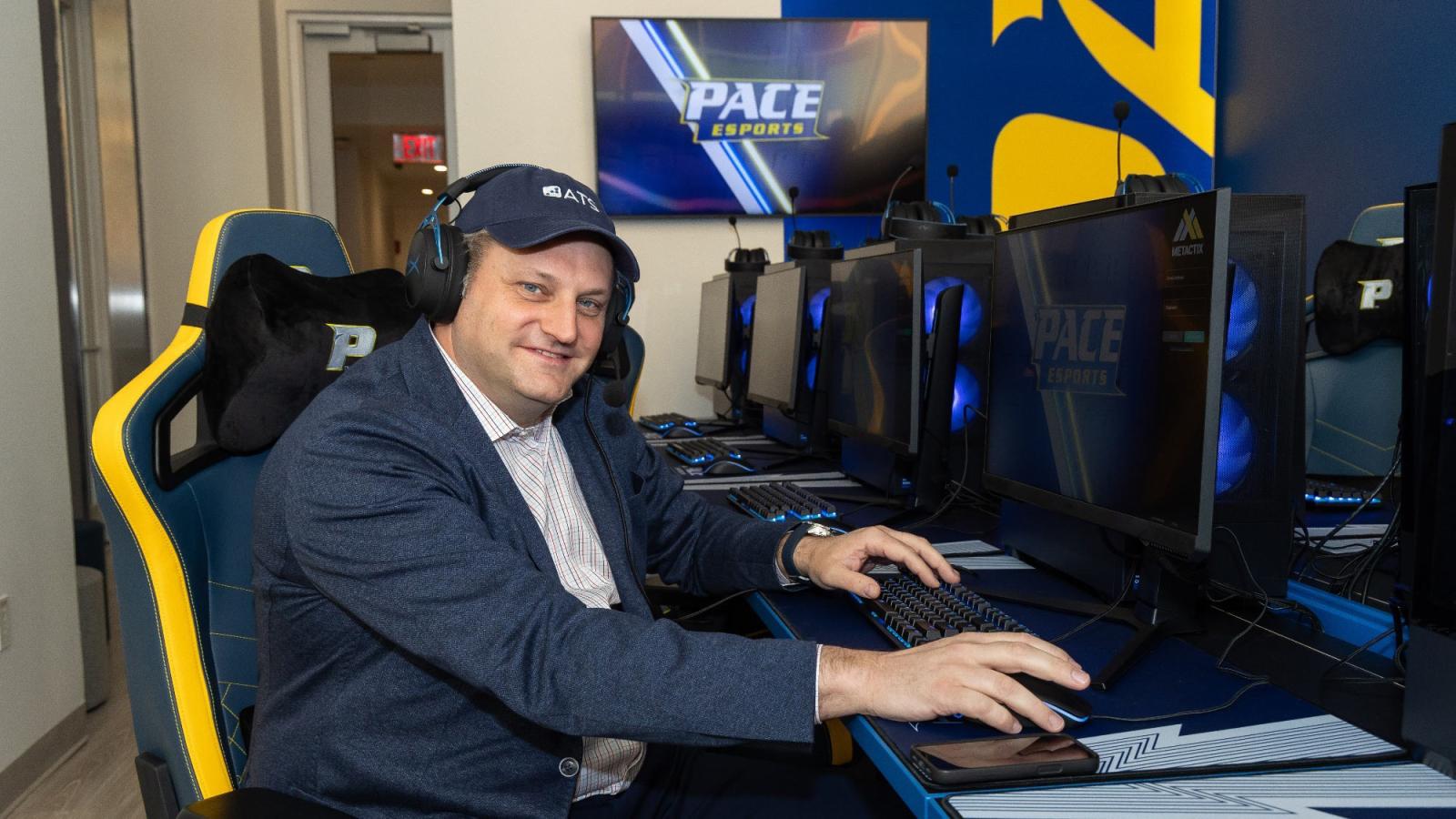
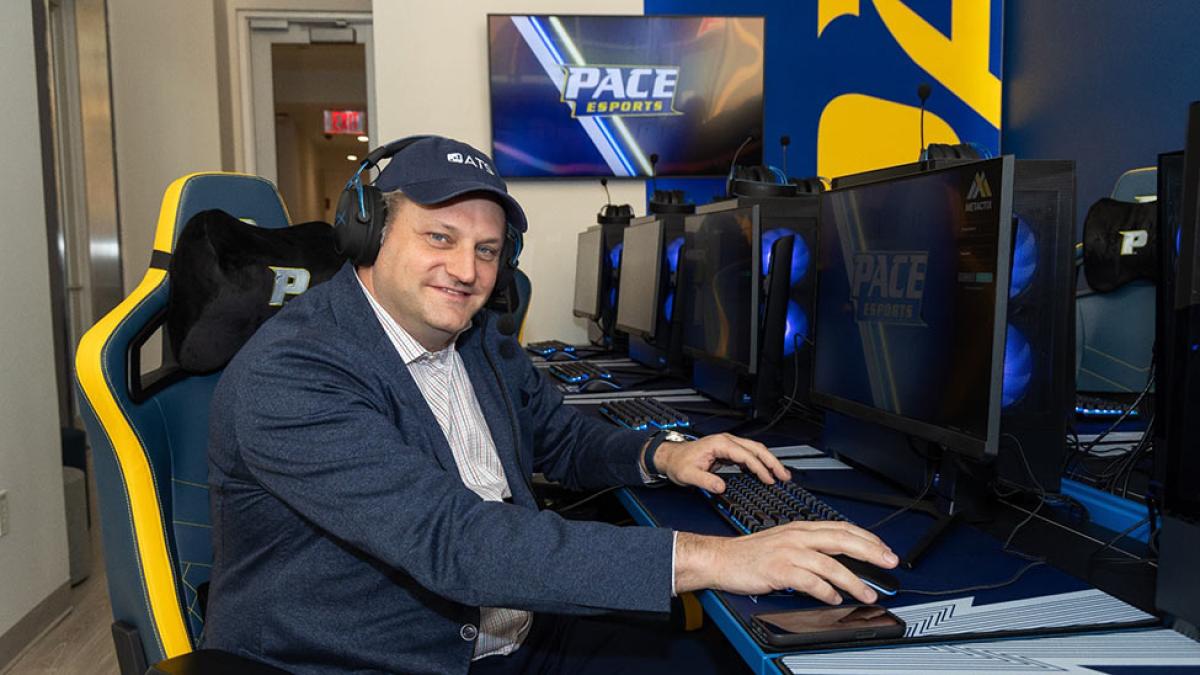
Pace University’s Board of Trustees announced the election of a new member, Dov Horowitz '05 (Seidenberg School of Computer Science and Information Systems), a distinguished alumnus and IT leader.
"Dov Horowitz is committed to Pace’s mission of creating opportunities for our students now and throughout their careers,” said Rob Sands, chairman of Pace’s Board of Trustees. “We are pleased to welcome him to our Board of Trustees and look forward to benefiting from his expertise, vision, and leadership.”
Dov is the CEO of American Technology Services (ATS), which offers modern technology solutions, including cloud, compliance, custom software development, and network design services. ATS has enhanced its cybersecurity and digital innovation capabilities through strategic acquisitions of cybersecurity and innovative firms. At the NYC headquarters, ATS incubates advanced solutions including the AI-powered web hosting platform LoudSpot and virtual reality simulations. Dov also leads Worldwide TechServices, a global IT professional services and infrastructure support company, where he has served as CEO since 2011.
Dov Horowitz, who received a master’s degree in computer science from Pace’s Seidenberg School of Computer Science and Information Systems, recognized that the dramatic ascendance of the Esports and videogame industries presented new, exciting opportunities for Pace to better serve its students. With a landmark gift to support the institution of competitive Esports at Pace, Horowitz’s company, American Technology Services, became the Founding Partner of the varsity program. Dov and American Technology Services saw the potential of Esports to enrich competitors’ student experiences while engaging them in an emerging, multibillion dollar industry.
“As a proud Pace alum, I've experienced firsthand the significant and meaningful impact the university can have in educating and inspiring students,” said Horowitz. “The Esports program, for example, offers ongoing dynamic competitive, curricular, and vocational opportunities for both current and future Pace students. I’m honored to join the Board of Trustees as the university continues to meet student demand and foster next-generation skillsets.”
In fact, following Horowitz’s momentous support, Pace University's Esports program was voted No. 1 in the nation after winning a March Madness-styled bracket for college esports programs. Currently, there are more than 500 members across both campuses that are a part of the Pace University gaming community, including players on Pace’s Varsity, Academy, Club, and intramural teams. Pace is defying a national trend in the growth of participation by female or non-binary athletes. In the past year, the share of women on the school’s esports team has grown to 28% from 19%, and notably, half of the members in the esports club are female.
About Pace University
Since 1906, Pace University has been transforming the lives of its diverse students—academically, professionally, and socioeconomically. With campuses in New York City and Westchester County, Pace offers bachelor, master, and doctoral degree programs to 13,600 students in its College of Health Professions, Dyson College of Arts and Sciences, Elisabeth Haub School of Law, Lubin School of Business, School of Education, Sands College of Performing Arts, and Seidenberg School of Computer Science and Information Systems.
New York Special Narcotics Prosecutor Bridget G. Brennan to Receive Robert S. Tucker Prize for Prosecutorial Excellence
The Elisabeth Haub School of Law at Pace University will bestow the 2024 Robert S. Tucker Prize for Prosecutorial Excellence on Bridget G. Brennan, New York City’s Special Narcotics Prosecutor, in recognition of her outstanding contributions to the field of criminal prosecution and excellence in prosecutorial practice.
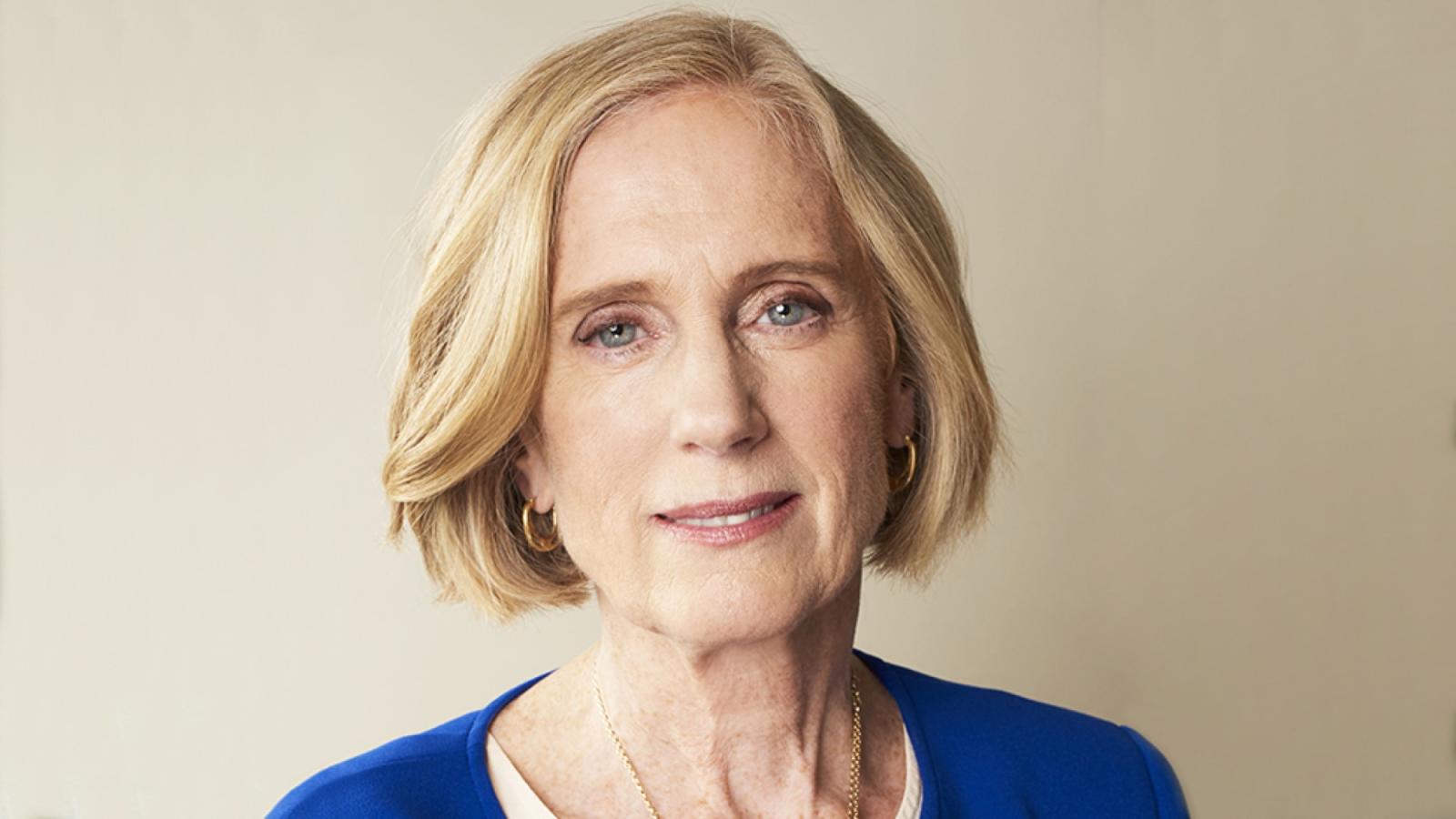
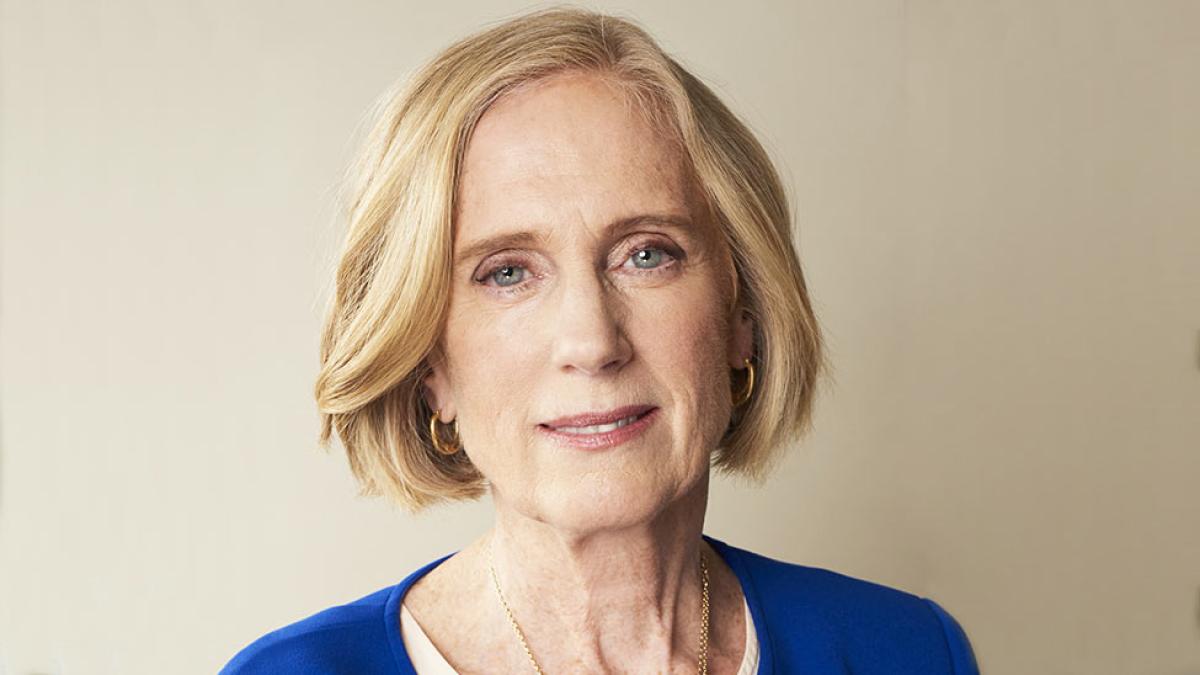
The Elisabeth Haub School of Law at Pace University will bestow the 2024 Robert S. Tucker Prize for Prosecutorial Excellence on Bridget G. Brennan, New York City’s Special Narcotics Prosecutor, in recognition of her outstanding contributions to the field of criminal prosecution and excellence in prosecutorial practice.
“Bridget Brennan has had an impressive career demonstrating her commitment to the pursuit of justice as a narcotics prosecutor and as an advocate for alternatives to prosecution,” said Haub Law Dean Horace E. Anderson Jr. “Her tenacity in leading the fight against drug abuse in New York is truly admirable. A prestigious jury of prosecutors, former prosecutors, criminal law experts and law professors has selected her for the Tucker Prize in recognition of the imagination and compassion with which she deals with a serious social issue, one that touches all too many lives in the New York area and beyond.”
New York has long been at the forefront of the drug crisis and fueled by the disruptions of the COVID-19 pandemic, the crisis has grown substantially worse. A recent report from the CDC’s National Center for Health Statistics estimated that 3,156 overdose deaths occurred in New York City in 2023.
Under Brennan’s leadership, the Office of the Special Narcotics Prosecutor has developed expertise to meet challenges posed by each new phase of the deadly opioid epidemic. She established the Heroin Interdiction Team, the Digital Forensic Services Unit, the Criminal and Investigative Analysts Unit, the Prescription Drug Investigation Unit, the Narcotics Gang Unit, the Money Laundering and Financial Investigation Unit, the Community Outreach Unit, the Discovery Compliance and Litigation Unit, the Post Judgment Litigation Unit, the Conviction Review Committee, and the Educational Outreach Committee.
Brennan was appointed as New York City’s Office of Special Narcotics Prosecutor on May 1, 1998. She oversees a staff of approximately 200 legal and support personnel. The agency has its own budget for operating expenses and receives funding from the city, state, and federal government. She is New York City’s longest serving Special Narcotics Prosecutor. She joined the Office of the Special Narcotics Prosecutor in 1993.
Brennan has worked to raise public awareness about the heightened risk of overdose, most recently linked to lethal synthetic opioid drugs that saturate the supply of narcotics in New York City. She has been a longtime advocate of alternatives to incarceration and has worked with District Attorney Offices of the five boroughs to promote treatment alternatives, Judicial Diversion, Prosecutor-Led Diversion Programs and Alternative to Incarceration (ATI) Court.
The Office of Special Narcotics Prosecutor strives to reduce demand for narcotics by raising public awareness and facilitating alternatives to incarceration and drug treatment, and is in regular communication with providers in the fields of education and drug treatment. It is committed to ensuring that the criminal justice system is fair for all. As head of the office, Brennan has implemented a strategic approach to protecting and saving lives that reduces arrests and incarceration. By intercepting large amounts of lethal narcotics at the top of the supply chain, and investigating and prosecuting high-level traffickers, the office prevents countless overdoses and street-level arrests.
Brennan was appointed by the five New York City District Attorneys to investigate and prosecute citywide, national, and international drug trafficking in partnership with city, state, and federal law enforcement. She blends tough and fair prosecutions with compassion and empathy. She has been a strong voice in calling attention to the rising rates of drug overdoses and has given needed recommendations for reducing these tragic deaths. In 2022, the most recent year for which data is available, more than 3,000 New York City residents died of overdoses – the highest number on record.
A native of Wisconsin, Brennan holds a Bachelor of Arts degree in Journalism from the University of Wisconsin, and she graduated from the University of Wisconsin Law School in 1983. Before her legal career, she was a print, radio, and television reporter in her home state. Brennan joined the New York County District Attorney’s Office as an Assistant District Attorney in 1983. She served as the Chief of the Special Investigations Bureau during her time with the D.A.’s office.
Brennan has been a speaker at international conferences and in academic settings throughout the United States, and has been interviewed as an expert on national and local media. She was recognized as Outstanding Prosecutor by the Criminal Justice Section of the New York State Bar Association, and for her leadership by the Drug Enforcement Administration, New York County Lawyers Association, and numerous community organizations, enforcement agencies, and substance use treatment providers. In 2017, she received the Lifetime Achievement Award from the National Police Defense Foundation.
“Bridget Brennan’s remarkable career as a narcotics prosecutor is a reflection of the values and commitment in criminal prosecution that we aim to recognize with this award,” said Robert S. Tucker, Chairman and CEO of T&M, whose generous gift has endowed this annual award at Haub Law. “We are delighted to present her with the Robert S. Tucker Prize for prosecutorial excellence and to celebrate her accomplishments among her peers and the broader legal community,” said Tucker, a Haub Law alumnus and Pace University Board of Trustees member.
The Robert S. Tucker Prize for Prosecutorial Excellence is awarded annually to an individual or a group of individuals who have made outstanding contributions to the field of criminal prosecution and who demonstrate excellence in prosecutorial practice. Honorees are selected each year by a jury comprising former prosecutors and Haub Law faculty members. The award ceremony brings together prosecutors from across the region and state, civic leaders, members of the judiciary, New York City government and the Haub Law community to recognize these distinguished individuals for their work. Past Award Recipients include Republic of Moldova Anticorruption Prosecutor Veronica Dragalin, Bronx District Attorney Darcel D. Clark and the Office of the Bronx District Attorney, Brooklyn District Attorney Eric Gonzalez, former New York Attorney General Barbara Underwood, and Richard A. Brown, the late Queens District Attorney.
The ceremony for the Robert S. Tucker Prize for Prosecutorial Excellence will take place on September 23, 2024 at Pace University in Manhattan, NY. For additional information about attending the ceremony, please email Rachael Silva.
Press Release: Pace University Art Gallery Presents We’re Home Exhibition
Pace University Art Gallery is pleased to present We’re Home, an exhibition which explores relationships within the domestic sphere featuring artists Destiny Belgrave, Katherine Hubbard, Steven Anthony Johnson II, Yung Oh Le Page, Pixy Liao and Margaret Zox Brown. The exhibit opens with a reception on Friday, June 7, 5:00 p.m.–7:00 p.m.
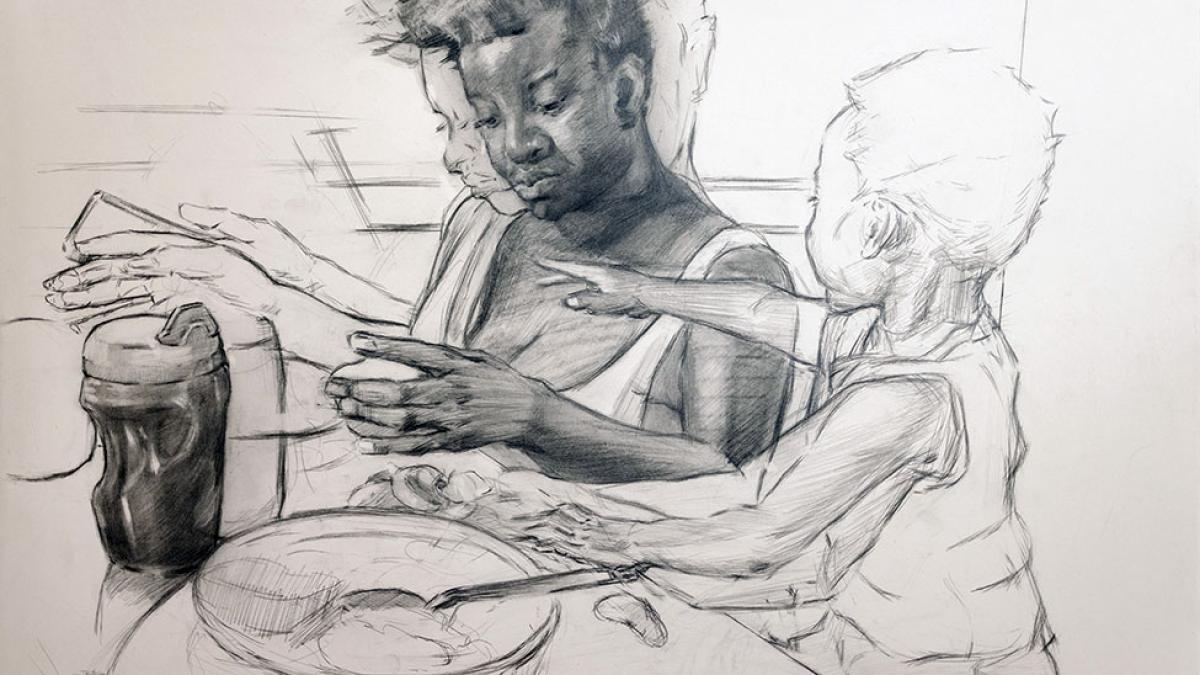
The exhibit explores the gentler intricacies of human connection, capturing the essence of home through the lens of shared experiences and memories
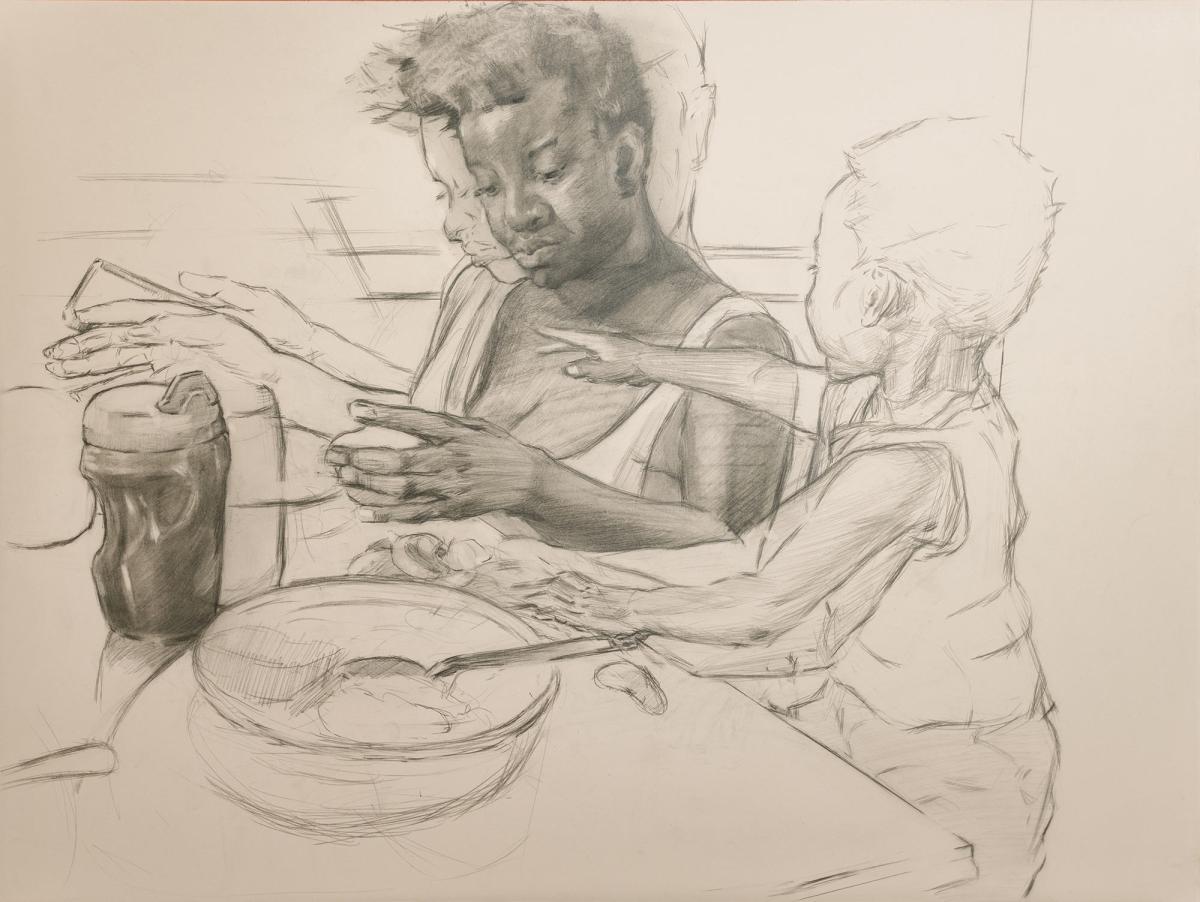
Pace University Art Gallery is pleased to present We’re Home, an exhibition which explores relationships within the domestic sphere featuring artists Destiny Belgrave, Katherine Hubbard, Steven Anthony Johnson II, Yung Oh Le Page, Pixy Liao and Margaret Zox Brown. The exhibit opens with a reception on Friday, June 7, 5:00 p.m.–7:00 p.m.
The We’re Home exhibit navigates the gentler intricacies of human connection, capturing the essence of home through the lens of shared experiences and precious – though sometimes difficult – memories. As co-curator Kassandra Schengili ‘25 explains, “We’re Home encapsulates how we view home and create it.” Home is often thought of as simply the house or apartment in which we dwell, but home is more accurately the people who surround us and hold us dear. Home can be in the embrace of a lover, a waft of your caregiver’s perfume, or the sound of your child’s cry. The exhibit delves into the enduring ties that bind us together within the sanctuary of the homes we are born into and those we build for ourselves.
Schengili, along with Jordanna Naidoo ’26, received the Amelia A. Gould Undergraduate Research Assistant Award from Pace’s Center for Undergraduate Research Experience to work with Art Gallery Director Sarah Cunningham to develop the exhibition. Naidoo states, “This exhibit has been an interesting journey from the start. Being given creative leadership on this project has been inspiring.” Schengili continued, “Curating the exhibit allowed me to meditate on how relationships truly make a house a home.”

This exhibit, which remains on view through Saturday, September 14, 2024, is made possible by the New York State Council on the Arts with the support of the Office of the Governor and the New York State Legislature. The gallery is in Lower Manhattan at 41 Park Row. All the gallery’s exhibits and events are free and open to the public. Summer gallery hours are Wednesday/Thursday 12:00 p.m.–6:00 p.m., Friday/Saturday 12:00 p.m.–4:00 p.m. and by appointment. Please check the art gallery Instagram for university holiday closures.
About the Artists
- Destiny Belgrave (b.1996) was born and raised in Brooklyn NY and nurtured, with a multi-cultural upbringing. She graduated from the Maryland Institute College of Art (MICA) in 2018 with a BFA in General Fine Arts, and a concentration in Painting. Belgrave is a collage artist, who uses various mediums as a means to explore culture, love and family.
- Katherine Hubbard (b. 1981) lives and works between Stone Ridge, NY and Pittsburgh, PA. She is an interdisciplinary artist whose work engages the intersections of photography, performance, and text. Considering analog photography as a mimesis of the body, Hubbard asks how its procedures might be called upon to investigate social politics, history, and narrative. She has had solo exhibitions at Company Gallery, Higher Pictures, Baxter St. Camera Club of New York, and The Kitchen, all in NYC. Her work has been exhibited in group exhibitions at venues including The Whitney Museum of American Art (NY), Marfa Ballroom (TX), A Luminary (MO),The Institute of Contemporary Art (MA); and MoMA PS1 (NY). Hubbard received her MFA in 2010 from Bard College and is currently an Associate Professor of Art and MFA Graduate Director at Carnegie Mellon University School of Art.
- Steven Anthony Johnson II (b. 1993, Baltimore, Maryland) is a draftsperson, interpretive archivist, writer and curator living in Brooklyn, NY. They hold an MFA from the New York Academy of Art and a BFA from the Maryland Institute College of Art. Utilizing the language of drawing, animation, and photo-documentary their work attempts to make peace between the religious, intellectual, and humanistic ideals in relation to Blackness and “Otherness” through multidisciplinary storytelling. Johnson’s work has recently been shown at The Armory; New York, The International Studio and Curatorial Program (ISCP); New York, VAE Raleigh; North Carolina, Cooper Gallery; United Kingdom and others. Johnson has been in-residence at Skowhegan; Maine, BRIClab, ISCP and Field Projects; New York, Inbreak; Los Angeles, and The Royal Drawing School; London and others.
- Yung Oh Le Page is a Brooklyn based artist who primarily works as a Museum Educator and Teaching Artist when not pursuing his passion to create cardboard sculptures and build community based mini golf. Recently, Yung has been focused on social practice with his current Slow Dance Project, inspired by his wife’s physical complications from stage 4 cancer.
- Born and raised in Shanghai, Pixy Liao is a Chinese artist residing in New York. Her long-term photo project “Experimental Relationship” challenges conventional ideas of gender dynamics. She also explores female identity in video and sculpture. She has participated in exhibitions internationally, including the Fotografiska, Rencontres d’Arles in Arles, Asia Society, the National Gallery of Australia, etc.
- Margaret Zox Brown lives in New York City's Greenwich Village and works in her Garment District studio. Her paintings are of authentic feelings and intimate realities that she has experienced firsthand. Brown attended Trinity College in Hartford, CT where she studied Psychology. For nearly three decades, she perfected her painting technique in weekly studio sessions at the 92nd Street Y. Brown's paintings are in private collections worldwide, as well as public spaces including Danny Meyer’s restaurant, Maialino and the lobby of the commercial building 462/470 7th Avenue, NYC among others. The artist has been featured in notable interviews, both on television and in print with WNBC, White Hot Magazine, Art of the Times, Creativ Magazine and more.
About the Pace University Art Gallery
Founded with the conviction that art is integral to society, the Pace University Art Gallery is a creative laboratory and exhibition space that supports innovation and exploration for both artists and viewers. Open to students, staff, and faculty from across the Pace campuses and, equally, to the Lower Manhattan community and visitors from around the world, the Art Gallery encourages personal investigation and critical dialogue via thought-provoking contemporary art exhibits and public programming. Enhancing the Art Department's Bachelor of Arts and Bachelor of Fine Arts programs, the Art Gallery offers students real-world opportunities to exhibit their own art and to work directly with professional artists to install and promote exhibitions. All exhibits and events are free and open to the public.
About Dyson College of Arts and Sciences
Pace University’s liberal arts college, Dyson College, offers more than 50 programs, spanning the arts and humanities, natural sciences, social sciences, and pre-professional programs (including pre-medicine, pre-veterinary, and pre-law), as well as many courses that fulfill core curriculum requirements. The College offers access to numerous opportunities for internships, cooperative education and other hands-on learning experiences that complement in-class learning in preparing graduates for career and graduate/professional education choices.
About Pace University
Since 1906, Pace University has been transforming the lives of its diverse students—academically, professionally, and socioeconomically. With campuses in New York City and Westchester County, Pace offers bachelor, master, and doctoral degree programs to 13,600 students in its College of Health Professions, Dyson College of Arts and Sciences, Elisabeth Haub School of Law, Lubin School of Business, Sands College of Performing Arts, School of Education, and Seidenberg School of Computer Science and Information Systems
Pace Students Take Home Biology Awards at William Paterson University Undergraduate Research Symposium
Three Pace University students earned awards for their work at the 17th Annual William Paterson University Undergraduate Research Symposium.
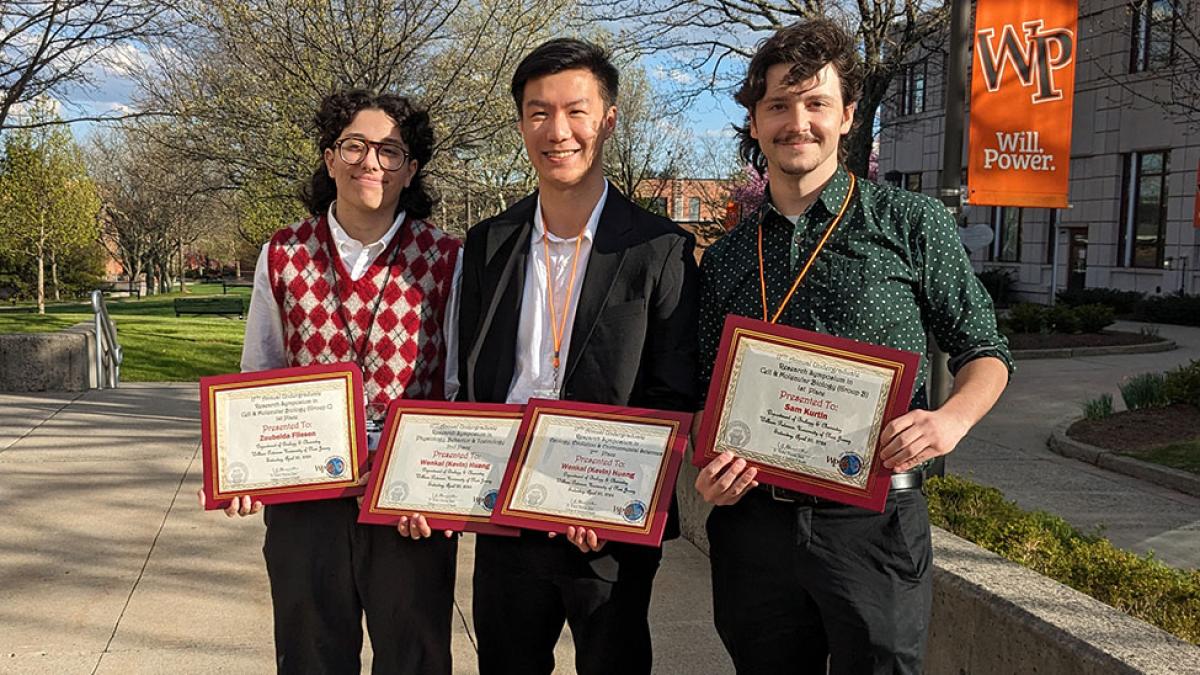
Three Pace University students earned awards for their work at the 17th Annual William Paterson University Undergraduate Research Symposium in late April.
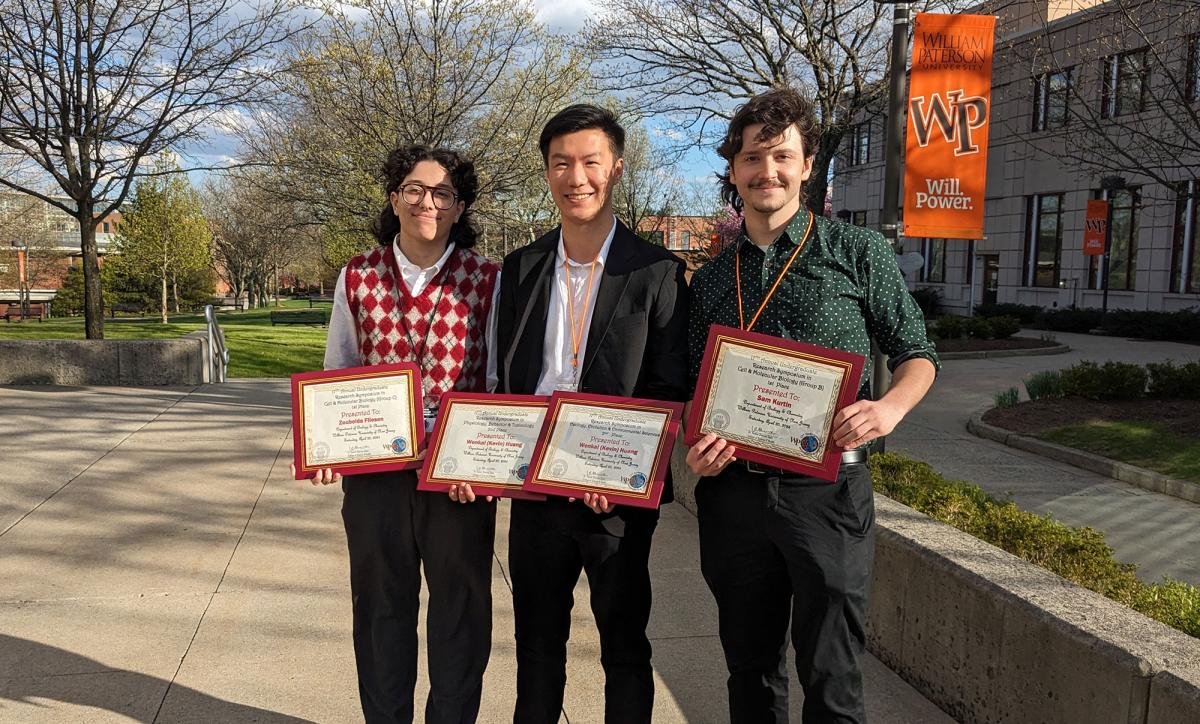
Sam Kurtin ’24, Biology, won a first-place award in the category "Cell and Molecular Biology (Group B)" for his poster "The Role of The Unfolded Protein Response in the Malfunction of a Human PQ-Type Calcium Channel." Kurtin’s research was done under the mentorship of Associate Professor of Biology Zafir Buraei, PhD.
Zoubeida (Zouzou) Fliesen ’24, Biology, also with faculty sponsor Buraei, took home first place in the category "Cell and Molecular Biology (Group C)" for his poster "Optimizing In Vitro Transcription to Study PQ Channel Mutations Implicated in Epilepsy."
Wenkai (Kevin) Huang ’25, Childhood Education (School of Education) won a pair of second-place awards: one in the category "Physiology, Behavior & Toxicology" for his poster "Analysis of Shoot Circumnutation Developmental Profile in Arabidopsis Thaliana" under the mentorship of Associate Professor of Biology Eric Brenner, PhD, and one in the category "Ecology, Evolution and Environmental Science" for his poster "The Bacterial Symbionts of the Parasitic Plant Rafflesia— Microscopic Partners For Conserving The World’s Largest Flowers?" with Sara Musovic and Associate Professor of Biology Jeanmarie Molina, PhD.
Pace University was one of 32 institutions from the Northeast region represented at the symposium, including Princeton, Columbia, Barnard, and Stevens Institute of Technology.
Seidenberg Hosts the Annual NYC Design Factory Project Gala
As the Spring 2024 semester was coming to an end at Pace University, the school’s NYC Design Factory, located at the Seidenberg School of Computer Science and Information Systems, hosted a gala event showcasing its student projects.
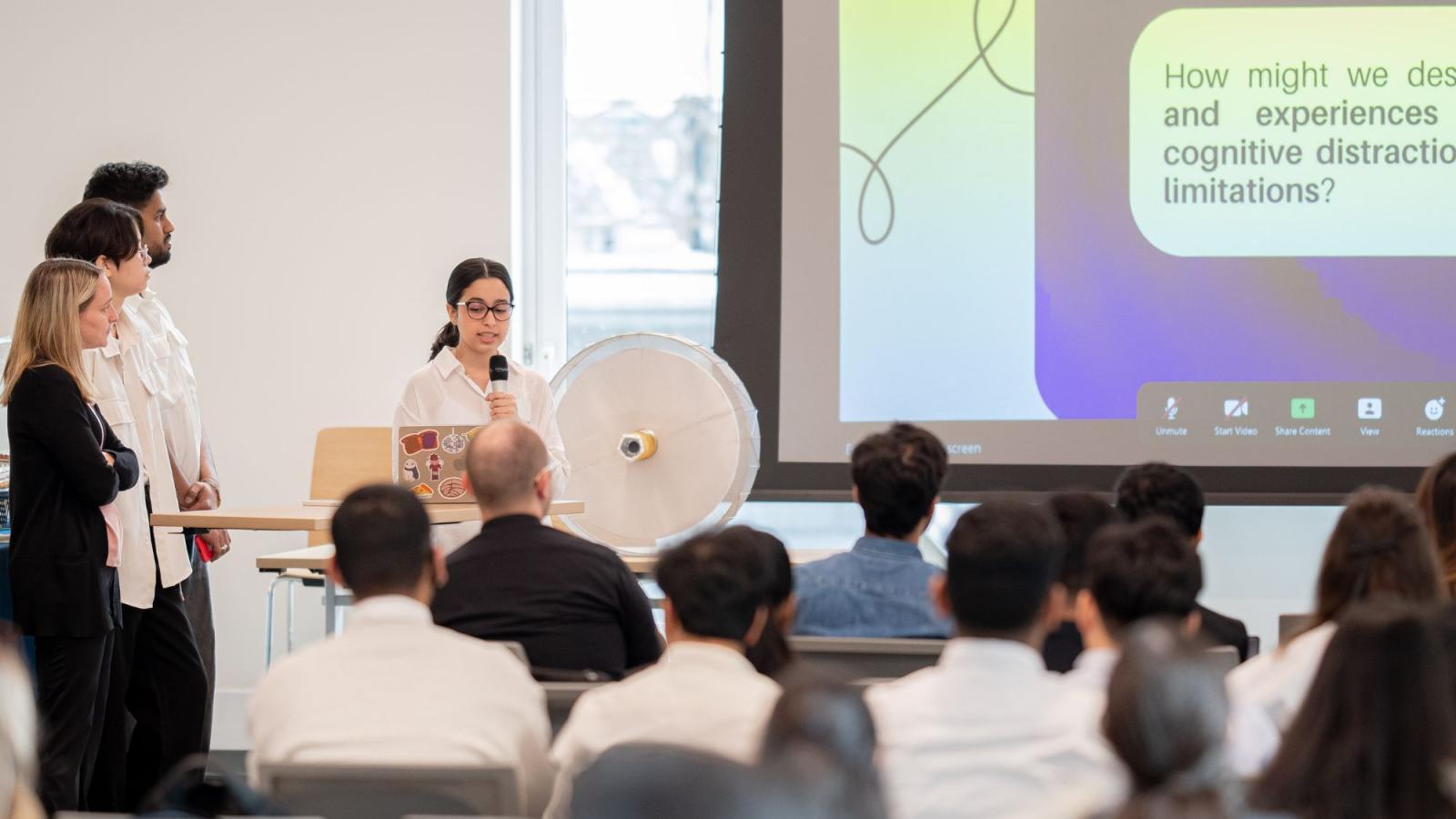
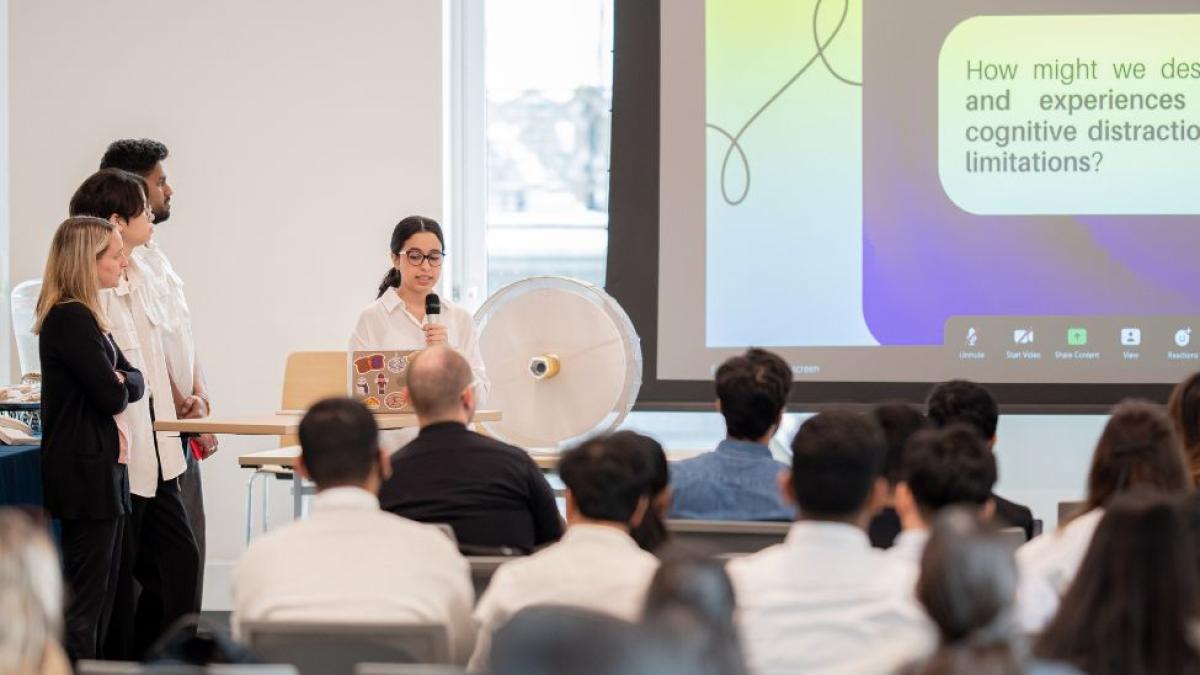
As the Spring 2024 semester was coming to an end at Pace University, the school’s NYC Design Factory, located at the Seidenberg School of Computer Science and Information Systems, hosted a gala event showcasing its student projects.
The NYC Design Factory serves as a collaborative hub where students, faculty, and industry professionals come together to address challenges in both industry and society through activities and courses. It is a member of the Design Factory Global Network, a global community of innovation hubs located in universities and research centers dedicated to fostering the next generation of innovators. The program is centered around a problem-solving approach that is technology-centered, design-inspired, and human-focused.
At the event, Andreea Cotoranu, the Director of the NYC Design Factory and Clinical Professor at Seidenberg, told the audience how the impressive projects that were presented had a crucial role in the students putting their learned knowledge into practice:
The student projects supported through the NYC Design Factory and the Design Factory Global Network offer unique opportunities for students to work on interesting industry and societal challenges. They also enable students to collaborate internationally with a diverse range of academic and industry stakeholders, preparing them with valuable skills for the future.
As for the gala itself, Professor Cotoranu added that it “showcased a small yet impressive range of products, services, and experiences created by Seidenberg students. As part of their coursework, students tackled both specific and complex challenges, demonstrating innovative solutions and practical applications of the design and technology tools they learned.”
Featured projects were not only presented by NYC Design Factory students, but also fellow students from Seidenberg’s Product Development, Prototyping and User Experience, and Software Engineering courses.
As part of the Independent Study (IS 600) course, mentored by Andreea Cotoranu and Seidenberg Adjunct Instructor Susanna Lammervo, there were three projects shown at the gala. Team NY Falcons presented Ford AutomAlte, a concept which focuses on enhancing safety and comfort with autonomous vehicles used as public transport, especially shuttles. Team Bubble-Tea addressed safety concerns for e-bike riders in busy urban environments with SafeCycle, and Team Ditto tackled mobility challenges faced by the elderly and those with disabilities, particularly in walking and driving, with their product GaitEase.

Projects from the Product Development (CS 365/665) course were mentored by Andreea Cotoranu, Susanna Lammervo, and Pace Film and Screen Studies Department Chair and Professor, Luke Cantarella. Team Griffin, aiming to develop versatile flight simulators for various industry applications and trade show demonstrations, developed the GoFly simulator. The solution developed by team The DesignSeers, Food for Thought, seeks to improve access to fresh and affordable produce in New York City and examines ways to empower residents to re-evaluate their relationship with food. Team Oculus addressed the environmental challenge posed by increasing space debris and satellite collisions by developing ORRUS, the Orbital Recovery Recycling and Utilization System.

Students from the Software Engineering Capstone (CS 491) course were mentored by Seidenberg professor, associate dean, and co-director of the new Seidenberg AI Lab, Dr. Christelle Scharff. Team MoonFlo focused on providing comprehensive support for women’s well-being, by creating an all-encompassing menstrual wellness tracker app called MoonFlo.
Shape Tomorrow’s Skyline and the Simpsons Effect, teams from the Prototyping and User Experience (IS 630) course, were mentored by Seidenberg Clinical Assistant Professor, Jonathan Williams, D. Des. Both teams concentrated on developing digital museums that accommodate digitally native artifacts. Shape Tomorrow’s Skyline is an exhibit designed to empower users to unleash their creativity by designing buildings that can be integrated into the New York City skyline, while the Simpsons Effect showcases how "The Simpsons" remarkably predicted over 10 real-life events by accompanying snippets from the corresponding episodes with comparisons to the real-life occurrences.
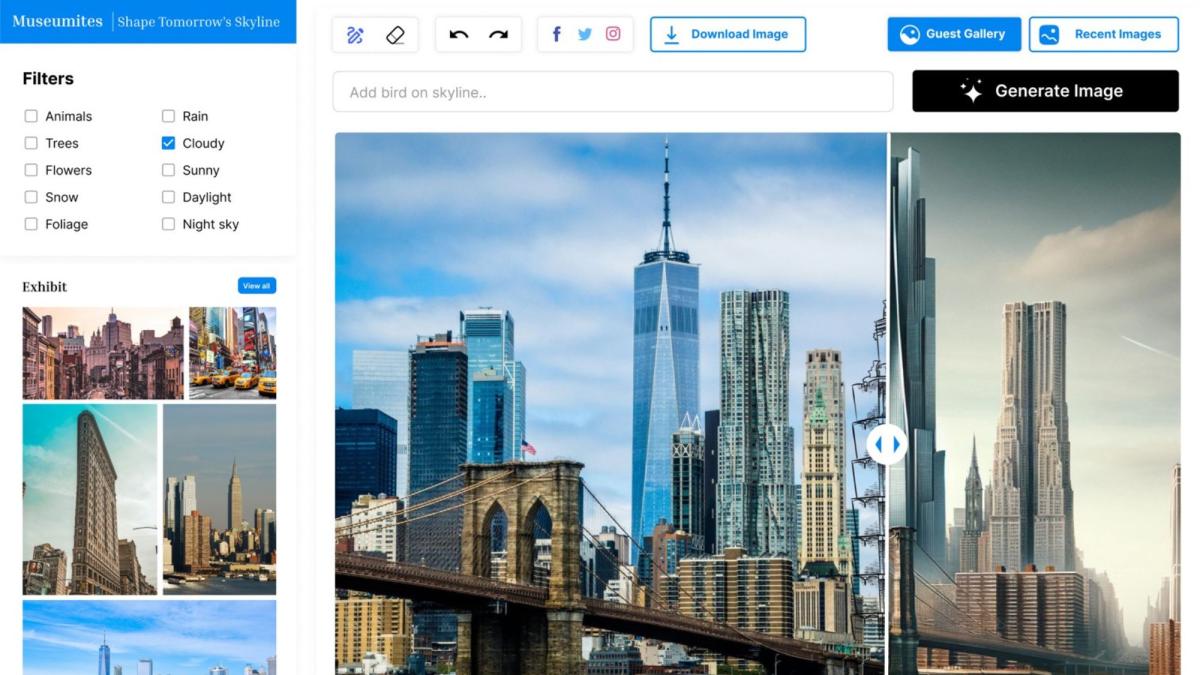
Jonathan Williams pointed out that these teams’ presentations were “the culmination of a semester full of site visits to museums, desk research, and developing a multitude of prototypes. Their work highlighted a true commitment to the practice of iterative prototyping.”
He also perfectly reflected the thoughts of the audience, as well as the professors who mentored all these innovative projects, when he said that “it was such a joy to watch my students present their work at the Project Gala."
Giving them the chance to share their work with the Pace community beyond the classroom not only builds awareness for their work, but affords them the opportunity to grow their professional communication skills as designers and technologists.
Millions Of Women Are Working During Menopause, But US Law Isn’t Clear On Employees’ Rights Or Employers’ Obligations
Professors Bridget Crawford and Emily Gold Waldman’s article on the legal uncertainties surrounding the rights of employees and obligations of employers for millions of women working during menopause.
Update On Closing Down Norlite Hazardous Waste Incinerator
Professor and Director of Pace Environmental Litigation Clinic Todd Omen speaks with to Hudson Mohawk Magazine about the New York State Department of Environmental Conservation efforts to amend Lights Out Norlite's permit to treat the fly ash from the plant as hazardous waste.